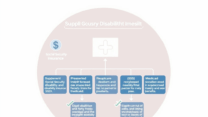
U.S. College Grant Cuts in 2025: What You Need to Know
Why Major U.S. Universities Lost Billions in Federal Grants

In 2025, several top U.S. universities are facing significant federal grant cuts, with losses totaling billions of dollars. This shift is largely due to tightened federal oversight, changing research priorities, and increased competition for limited funds. Universities like Harvard, Stanford, and MIT have seen reductions in grant allocations from agencies such as the National Institutes of Health (NIH) and the National Science Foundation (NSF).
One major reason for these cuts is the federal government’s strategic pivot toward funding more applied and workforce-driven research, especially in areas like renewable energy, AI, and national security. While elite institutions traditionally focused on theoretical and long-term research, newer universities and research centers offering practical, scalable solutions are now gaining favor.
Another contributing factor is compliance. Some universities failed to meet updated federal audit and reporting standards, leading to withheld or rescinded funding. Transparency, accountability, and alignment with national priorities are now critical to securing grants.
This change has real implications for students and researchers. Reduced funding may limit access to research assistantships, lab resources, and innovation opportunities. For prospective students, it’s more important than ever to research how well-funded a university’s programs are, especially in STEM fields.
To stay informed and make smart educational decisions, consider checking the latest federal funding data through the official U.S. government grant portal: https://www.usaspending.gov/
Why Major U.S. Universities Lost Billions in Federal Grants

In 2025, many prominent U.S. colleges and universities are facing significant federal grant reductions, and a key driver behind these cuts is the growing political backlash against Diversity, Equity, and Inclusion (DEI) programs. DEI initiatives, which aim to foster more inclusive and equitable campus environments, have become a lightning rod in national debates—particularly among conservative lawmakers who argue that such programs promote ideological bias and misuse taxpayer funds.
This political climate has led to legislative actions in several states to restrict or eliminate funding for DEI offices and related academic programs. As a result, institutions that previously received substantial federal and state support for DEI efforts are now seeing those funds reduced or entirely withdrawn. For example, some public universities in states like Florida and Texas have already been instructed to shut down DEI departments or risk losing funding.
For students and families, this shift could mean fewer support services for underrepresented groups, reduced access to scholarships tied to DEI goals, and a less inclusive campus experience overall. For faculty and researchers, it may result in fewer grants for projects that focus on social justice, equity, or minority health disparities.
Understanding the political motivations behind these funding cuts is crucial. While proponents argue it’s about fiscal responsibility and academic neutrality, critics warn that dismantling DEI infrastructure undermines progress toward equal opportunity in higher education.
To stay informed, students and educators can follow updates from trusted sources like the American Council on Education (https://www.acenet.edu), which tracks policy changes affecting higher education nationwide.
Why Major U.S. Universities Lost Billions in Federal Grants

In 2025, U.S. colleges are facing a significant financial challenge due to deep federal grant cuts. These reductions are part of a broader federal budget tightening, aimed at controlling national debt. As a result, many universities—especially public institutions—are losing billions in funding that previously supported research, student aid, and infrastructure development.
To cope with this crisis, colleges are adopting a mix of strategies:
1. Budget Cuts and Program Reductions: Many institutions are trimming non-essential programs, freezing faculty hiring, and reducing campus services. For example, some universities have announced the suspension of under-enrolled majors and graduate programs to reallocate resources more efficiently.
2. Legal Action: Several universities and education advocacy groups are filing lawsuits against the federal government, arguing that the sudden withdrawal of promised funds violates existing agreements and disproportionately harms low-income and minority students.
3. Tuition Increases and Alternative Funding: To offset the loss, some colleges are raising tuition, which could place a heavier burden on students. Others are seeking alternative funding through private partnerships, alumni donations, and state-level grants.
4. Innovation and Adaptation: On a more positive note, the crisis is pushing schools to innovate. Institutions are investing in online education, micro-credential programs, and workforce-aligned degrees to attract non-traditional students and generate new revenue streams.
This situation underscores the importance of financial resilience and strategic planning in higher education. For students and families, it’s crucial to stay informed about how their chosen institutions are adapting and what support services remain available.
For more detailed information, you can refer to the official report from the U.S. Department of Education: https://www.ed.gov/news/press-releases
Pell Grant Reductions and the Future of Tuition-Free Programs in the U.S.

In 2025, significant changes are expected in the landscape of federal student aid, particularly affecting the Pell Grant program. The Pell Grant, a cornerstone of college affordability for low- and middle-income students in the U.S., is facing proposed budget cuts that could impact millions of students nationwide.
The Pell Grant currently provides up to $7,395 per year (as of the 2023-2024 academic year) to eligible students. However, under the proposed federal budget for 2025, this amount may be reduced or frozen, failing to keep pace with rising tuition costs. This change could disproportionately affect students attending community colleges and public universities, where Pell Grants often cover a significant portion of tuition.
These potential reductions come at a time when many states and institutions are expanding tuition-free college programs. Programs like New York’s Excelsior Scholarship and California’s Promise Program aim to eliminate tuition for eligible residents. However, these initiatives often rely on federal grants like Pell to cover the full cost of attendance. A cut in Pell funding could therefore undermine the sustainability and reach of these tuition-free efforts.
What does this mean for students and families? It’s more important than ever to explore alternative funding options, such as state grants, institutional scholarships, and work-study programs. Staying informed about changes in federal policy and applying early for financial aid through the FAFSA (Free Application for Federal Student Aid) is also crucial.
For more detailed information on the Pell Grant and updates on federal student aid, you can visit the official Federal Student Aid website: https://studentaid.gov/understand-aid/types/grants/pell
While the future of tuition-free college remains uncertain, advocacy for sustained or increased Pell Grant funding continues to be a priority for many education policy groups. Ensuring access to affordable higher education is essential for social mobility and economic growth in the U.S.







